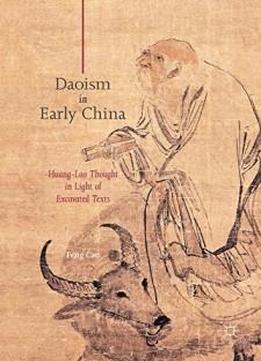
Daoism In Early China: Huang-lao Thought In Light Of Excavated Texts
by Feng Cao /
2017 / English / PDF
5.7 MB Download
This text considers the prevalence of Lao-Zhuang Daoism and
Huang-Lao Daoism in late pre-imperial and early imperial Chinese
traditional thought. The author uses unique excavated documents
and literature to explore the Huang-Lao tradition of Daoist
philosophy, which exerted a great influence on China ancient
philosophy and political theories, from the Pre-Qin period to the
Wei-Jin periods. It explains the original and significance of
Huang-Lao Daoism, its history and fundamental characteristics,
notably discussing the two sides of Huang-Lao, namely the role
and function of Lao Zi and the Yellow Emperor, and discusses why
the two can constitute a complementary relationship. It
also provides a key study of the Mawangdui silk texts, bamboo
slips of the Heng Xian, Fan Wu Liu Xing, considering both the
theory of human Xing and of Qi.
This text considers the prevalence of Lao-Zhuang Daoism and
Huang-Lao Daoism in late pre-imperial and early imperial Chinese
traditional thought. The author uses unique excavated documents
and literature to explore the Huang-Lao tradition of Daoist
philosophy, which exerted a great influence on China ancient
philosophy and political theories, from the Pre-Qin period to the
Wei-Jin periods. It explains the original and significance of
Huang-Lao Daoism, its history and fundamental characteristics,
notably discussing the two sides of Huang-Lao, namely the role
and function of Lao Zi and the Yellow Emperor, and discusses why
the two can constitute a complementary relationship. It
also provides a key study of the Mawangdui silk texts, bamboo
slips of the Heng Xian, Fan Wu Liu Xing, considering both the
theory of human Xing and of Qi.











